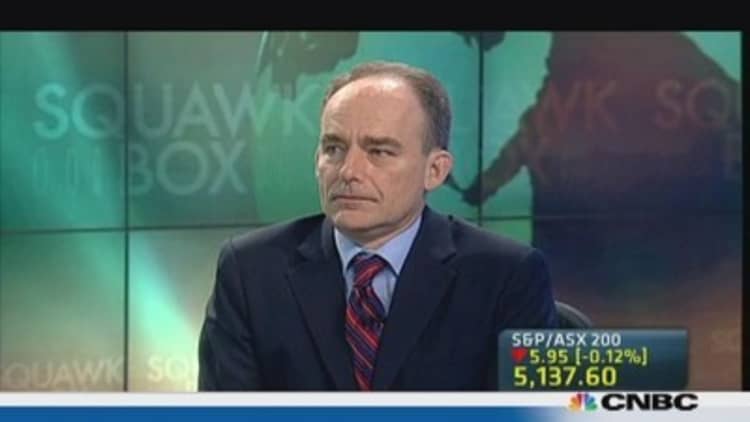Standard & Poor's (S&P) credit ratings agency has lowered its U.S. growth forecast warning of "significant downside risks" from federal spending cuts.
"We've lowered our forecast for U.S. GDP growth in light of the additional sequester spending cuts in 2014 as well as the potential for another political standoff in Washington after the October government shutdown," S&P said on Monday, ahead of the bipartisan budget deal struck in Washington.
(Read more: No 'extremists in my party,' says Dem Whip Hoyer)
"We now expect the world's biggest economy to expand 2.6 percent next year, down from our forecast of 3.1 percent at last quarter's Credit Conditions Committee meeting," it added.
The ratings agency published its warning in its quarterly update on credit conditions in North America, the Asia-Pacific region and Europe on Monday, in which it gives its outlook on the "evolution of macroeconomic conditions and broad financial trends that could affect credit quality."
(Read more: Guess what? DC could deliver a merry Christmas)
U.S lawmakers reached a deal on Tuesday evening to fund the government past mid-January, averting another feared government shutdown like the one seen in October. In a new sign of bipartisan cooperation, Senate Democrats and Republicans agreed to reduce automatic spending cuts and the deficit levels by $23 billion over two years.

The framework would set spending levels above the $967 billion cap established by the sequester; the budget for 2014 would be set at $1.012 trillion, and the budget for 2015 would be $1.014 trillion. The compromise means that they have effectively agreed to roll back billions of the harshest automatic spending cuts for the Pentagon and domestic programs.
(Read more: Budget deal would reduce automatic spending cuts by $63 billion over two years)
"While modest in scale, this agreement represents a positive step forward by replacing one-time spending cuts with permanent reforms to mandatory spending programs that will produce real, lasting savings," House Speaker John Boehner said in a statement.
The agreement still needs to pass a vote in the Republican-controlled House, expected to take place by Friday, as well as a vote in the Democrat-controlled Senate shortly thereafter but analysts expect it to pass as lawmakers are keen to avert a damaging government shutdown like the one seen in October.
(Read more: Tea Party Founder:Time to Cut Federal Spending in Half)
S&P had spotted some highlights for the U.S., noting that modest gains in employment and a continuing recovery in the housing market were bolstering consumer sentiment and spending. Furthermore, it said that "resilience" inthe private sector was "outweighing the drag from sequestration-relatedcuts in government spending and that Americans' purchasing power wasimproving. Nonetheless, these were not enough to prevent it lowering its growth outlook.
S&P noted that uncertainty about when the Federal Reserve would taper its bond-buying program -- and the reaction of global financial markets -- was also adding to headwinds facing global economies.
(Read more: No respect! Traders unimpressed by 'boring' S&P trade)
"A disorderly response from financial markets to the Fed's unwinding of quantitative easing remains a shared and important risk for credit conditions around the world," S&P warned. It added, however, that low inflation in the country meant that the fed was likely to "gradually taper bond purchases and to keep monetary policy accommodative through 2014."
"We anticipate overall financial conditions will remain favorable for some time," the report said.



